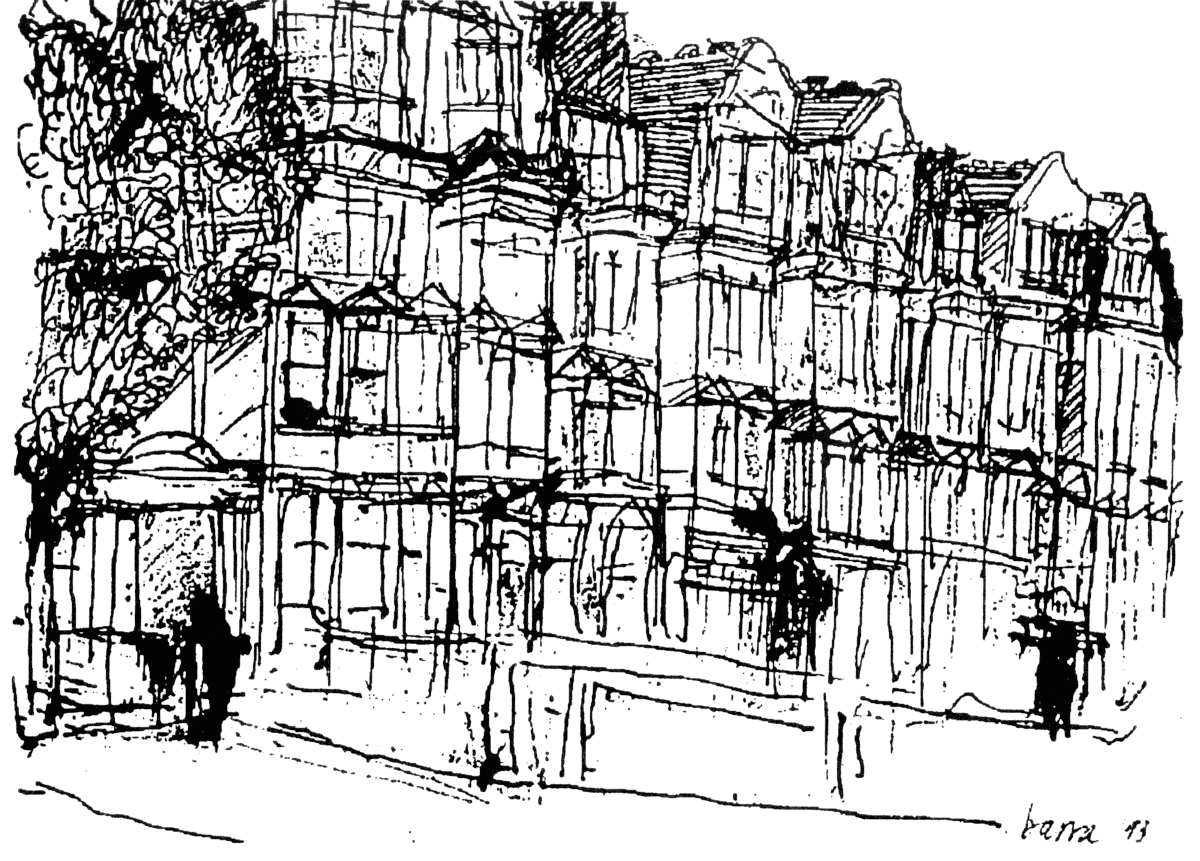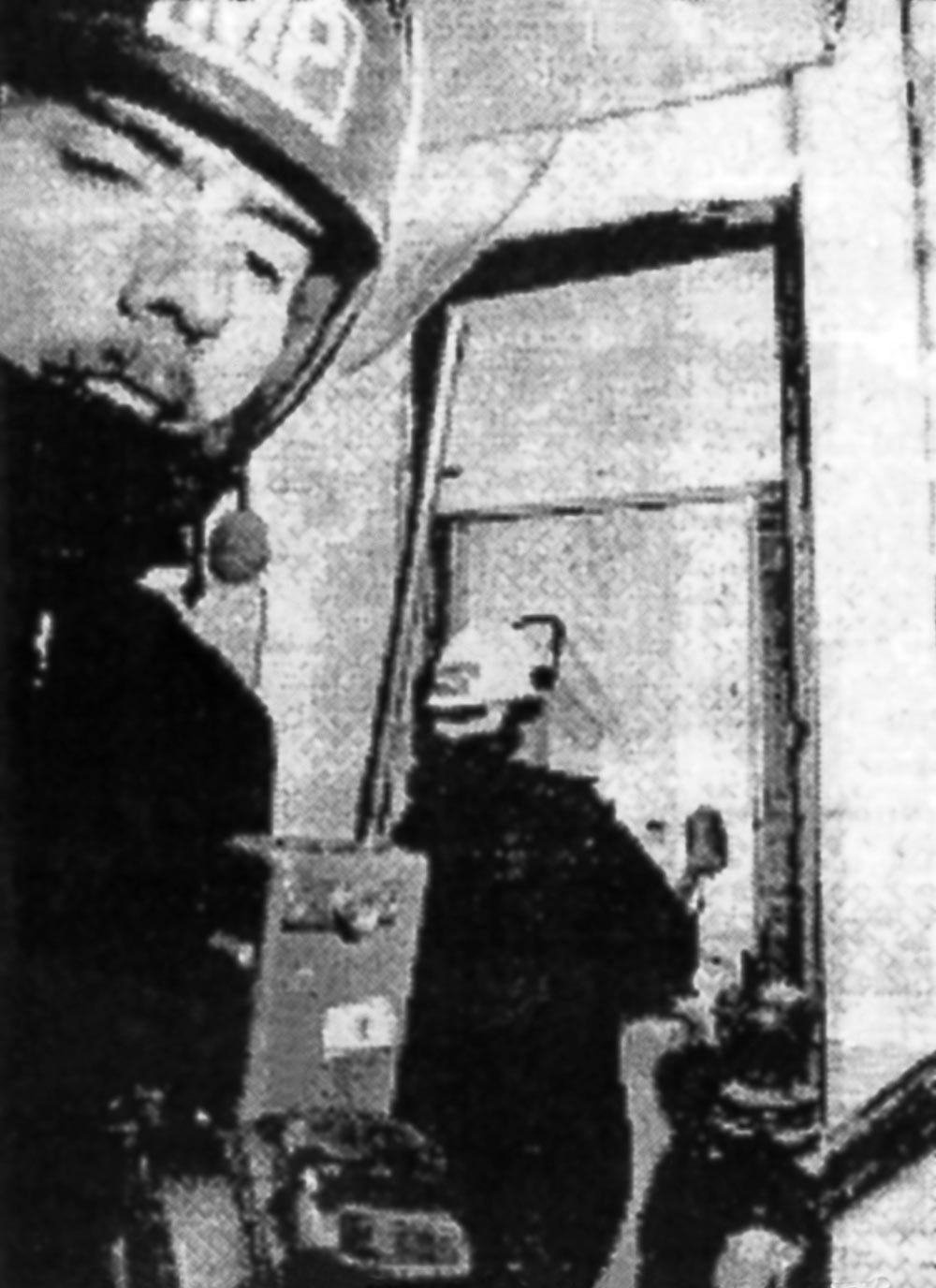
Rutlanders' Last Stand?
The largest squat in Britain was finally evicted in the early hours of a cold Sunday morning.
Squall 6, Spring 1994, pp. 26-28.
On December 12th, dozens of vans carrying 250 police, of which about half were in full riot gear, turned into Walm Lane and pulled up in front of Rutland Park Mansions.
The squatters of the mansions (Rutlanders - as they liked to be called) had called the Bailiff’s office on Friday and been told that a day for eviction had not yet been fixed. Repeated requests to Brent council asking that eviction be withheld until the 20th December, in order to find alternative accommodation, went ignored. At about 10.00pm on Saturday night the Rutlanders heard via the network that their eviction was to take place sometime after 5.00am the following morning. By midnight the information had been confirmed locally. The Rutlanders then had less than six hours to mobilise themselves, remove valuable equipment, contact solicitors, journalists and support.
After fighting a lengthy campaign in court, possession of the Mansions was finally granted to Brent Council, despite the Rutlanders' own comprehensive plans to refurbish and renovate the blocks. Brent Council sold the Mansions to Paddington Churches Housing Association (PCHA) for £400,000 and the original plan was to demolish the Mansions and rebuild fewer flats on the same site, whilst giving the rest of the space over to a car park.
"Chainsaws and Molotovs"
Plans to demolish the mansions were dropped in October when opposition was voiced by the Rutlanders and supported by local residents, English Heritage, the Victorian Society and Willesden Green Historical Society. Brent Council and PCHA consequently changed their plans from complete demolition to a conversion of the 42 four bed flats into 42 two bedroom flats.
Brent Council and PCHA planned to spend £3 million to house 80 people and provide 21 car parking spaces. The plans involved renovating only half the Mansions, demolishing the rest. As an alternative, the Community Plan forwarded by the squatters of Rutland Park in conjunction with their local Tenant’s Association intended spending £1.5 million to house 160 people. Their plan would have renovated the whole building and provided immediate housing for the homeless.
At a briefing before the eviction, police and sheriffs officers had been told to expect violent resistance. On Sunday morning, the London radio station, LBC, reported that police saw molotov cocktails and chainsaws being taken into the Mansions. An interview with Chief Superintendent David Jarvis, leading the operation, on the next bulletin corrected the error:
“I’d like to put straight your earlier bulletin which said that we saw chainsaws and molotovs going into the building. In fact - we had good intelligence that they would be used - we didn’t see them going in.’’
There was, in fact, no violent resistance. The action being planned was to make it clear to the media and all present that what was happening was possibly illegal, unjust and plainly ridiculous.
Renovation or Demolition?
The Rutlanders had hoped to gain approval for their Community Plan under the new ‘Paint to Rent’ scheme proposed by Hartley Booth MP (see issue 5 SQUALL). Under this scheme single, homeless people would be given the rights and means to repair and renovate vacant and idle property. Rutland Park Mansions would have been ideally suited to such a scheme as there were many experienced workers, builders, plumbers and electricians living there.
The Rutlanders employed the services of architects, solicitors and surveyors, all of whom commented that the estimated £3 million Brent and PCHA proposed to spend was too much and, given that a lot of the labour necessary to renovate the Mansions would come free of charge from the residents themselves, a figure of £1.5 million was perfectly reasonable; especially as it would house twice the number of people that Brent/ PCHA proposed.
However, representations to Hartley Booth were unsuccessful. The MP for Finchley declined to assist or consider the Rutlanders’ application. It would appear that Dr. Booth didn’t want to get involved in a rabidly anti-squatter, Tory-controlled borough, even though the Rutlanders own ‘Paint to Rent Scheme’ is exactly what Dr. Booth was earnestly touting before his entry into research (Emily Barr). No doubt, Tories would rather see any 'Paint to Rent' schemes carried out in a Labour-controlled borough, as the scheme indirectly penalises a local authority for leaving property empty. A pilot scheme is rumoured to be aimed at Hackney and, while Bent may not have as many squatters as certain Labour-controlled boroughs, it certainly has its fair share of void, empty and derelict property. In terms of complaints registered against local councils, Bent is the most unpopular in Britain. In the last year there were allegedly three times as many complaints registered against Brent than against any other borough ever before. If there was ever an ideally suited partnership for a 'Paint to Rent' scheme it was Rutland Park Mansions and Brent Council.
Illegal Evictions
At about 7am on that Sunday morning, the police vans arrived, along with some 25 sheriff’s officers and two ambulances, co-incidentally exactly the same format as was used at the M11 link protests a week earlier (see 'Road-House Blues'). Streams of riot police, complete with visors and shields, poured from the vehicles into stairwells. Suddenly everyone was there; press, Brent Council officials, housing officers, solicitors, police, protesters, squatters and representatives of the local tenants association. Regular police officers began to move everyone on the streets back down towards the end of the mansions where a cordon was set up, 50 yards from the Mansions themselves.
The squatters’ solicitor, Angus Richardson, was heard alleging that the sheriff’s officers were not obeying the terms of the possession orders, one of which failed to include the common parts of one of the Mansions (a stairwell). Loud protests were heard coming from this stairwell informing police and sheriff’s officers that they were in breach of the possession order. The protesters were ignored and forcibly evicted.
"Had the mansions not been squatted they would have deteriorated beyond repair"
Upon entering the squats, some journalists and police officers were surprised that people had been living an ordinary/normal life there, and that the flats were in a good state of repair:
“Yes, it’s furnished and there’s food in the kitchen,” remarked one police officer in reply to a journalist's puzzled question.
“Pinned to the wall, in one of the flats, is a telephone bill indicating that the squatters here were on the phone,” commented another journalist. The surprise in his voice indicating his expectation of the squatting media myth.
As is the case with most squatters, the Rutlanders had spent considerable amounts of time and money renovating the Mansions. The owner of the local hardware shop admits that he would quite possibly have gone out of business had it not been for their custom.

“Without doubt, had the Mansions not been squatted, they would have deteriorated beyond any chance of repair,” commented a representative of a local Tenant’s Association.
At one point during the eviction, two squatter representatives managed to get behind police lines and attract the attention of a Sky News camera crew as well as half a dozen other reporters. They made a plea to the cameras, telling their version of events. A senior police officer stood nearby throughout the interview. As soon as the camera crew had finished he dived in and asked to see press passes.
“If you haven’t got press passes then you can’t stay here,” he said, anxious to get these articulate squatters away from the further attentions of any camera crews.
"Booby Trap Device"
Reports in the press of a booby-trap device found in one of the buildings were untrue. The story had been set up by the police press liaison officer who sold it to journalists and photographers:
“In a minute we’ll go in and get some shots of the device,” he was heard to say to the assembled journos, hungry for a shock angle on which to hang their stories and photos.
It is interesting to note that, while some newspapers and radio stations reported that a device had been discovered, no photos appeared to substantiate the allegation.
“You know that it’s just a set of shelves used for storage - it’s been there for years - why are you setting this up?” asked one squatter of the police press liaison officer, completely frustrated at this turn of events.
“Well, it could be used to push objects on top of officers coming up the stairs,” he replied, a grin spreading across his face.
“This is a game to you isn’t it? You’re just playing a game,” said the squatter.
“No different from the one you’re playing,” came the reply, the grin spreading wider.
Related Articles
The Last Press Release - eviction of Artillery Mansions occupation in Westminster on April 22nd (1994) - Squall 7, Summer 1994
Heavy Artillery - squatters take Artillery Mansions - an 'in yer face' protest about homelessness in the heart of Westminster - Squall 6, Spring 1994
